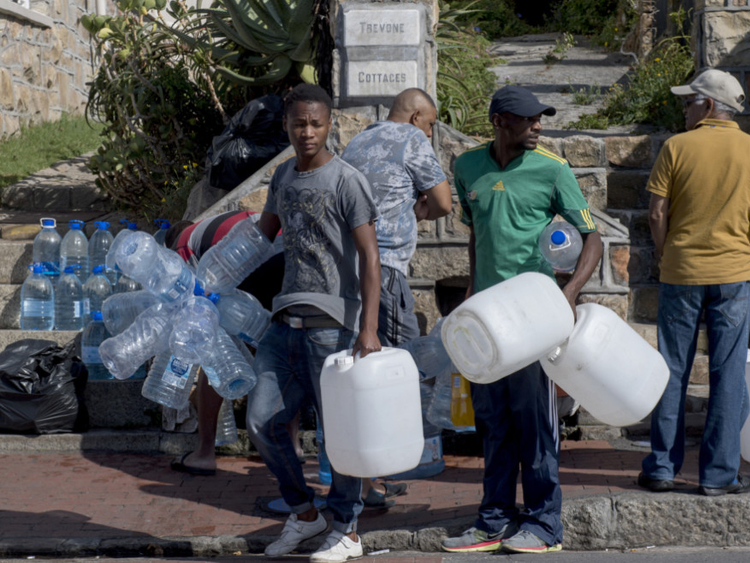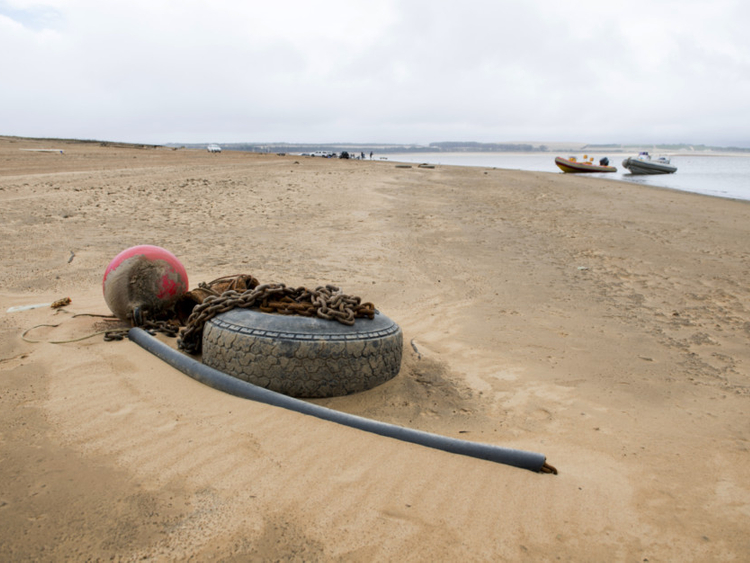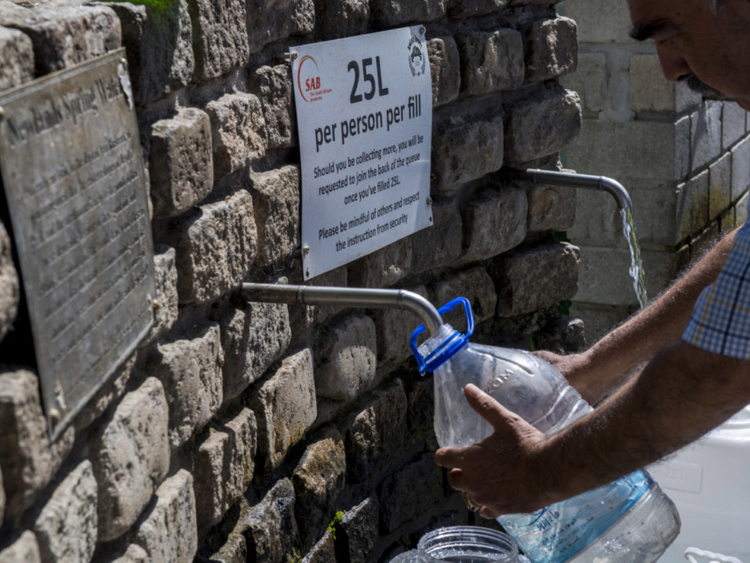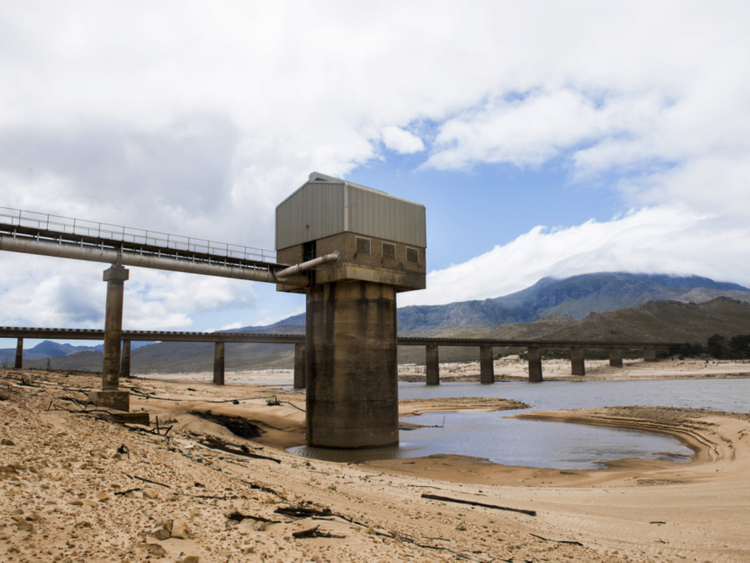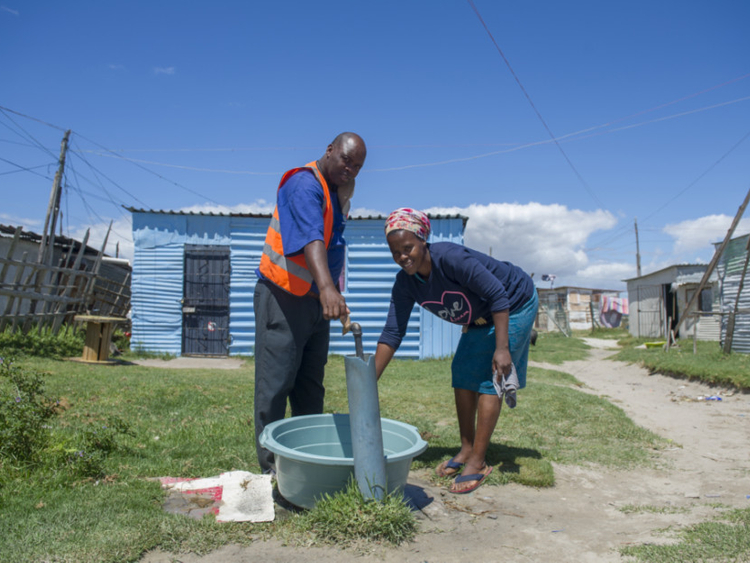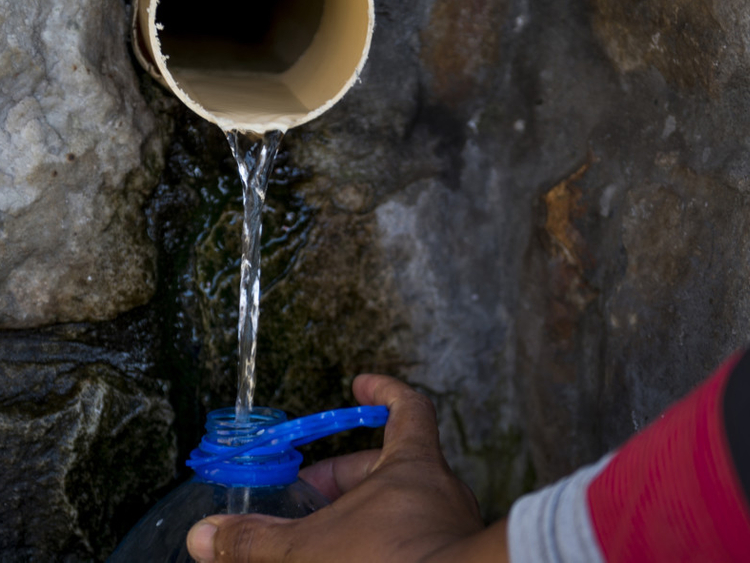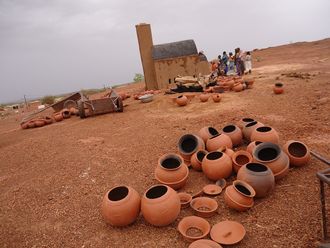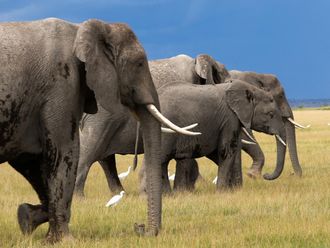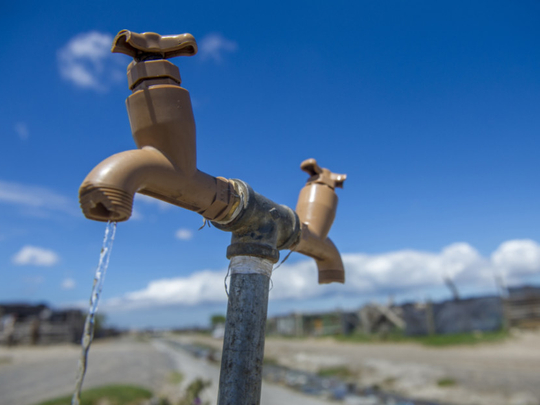
CAPE TOWN: Long lines of South Africans collect water daily from a natural spring pipeline in an upscale suburb of Cape Town, illustrating the harsh impact of a drought that authorities say could force the closure of most taps in the country’s second largest city in just over two months, an occasion ominously known as “Day Zero.”
The prospect that large sections of South Africa’s showcase city, famously perched near two oceans, might go without running water has induced anxiety as well as resolve among its nearly 4 million residents. It has attracted scrutiny from scientists and city managers worldwide who also face the dual challenge of ballooning populations and shrinking resources. This would be the world’s first major city to go dry. “There are a lot of people who have been in denial and now they suddenly realise this is for real,” said Shirley Curry, who waited to fill a plastic container with spring water from one of several taps in the Newlands suburb.
Security guards made sure people took only an allotted amount (25 litres maximum in one line and 15 litres in another “express” line). Mayor Patricia de Lille threatened to fine those who use too much water.
The spectacle of people scrounging for water could become more common as “Day Zero” approaches in Cape Town, whose natural beauty has made it a coveted spot for international visitors. While the city urges people to restrict water usage, many living in poor areas already have limited access to water.
Swim in ocean, not pools
Cape Town’s leaders have instructed residents to use only 50 litres of water daily from February 1, down from the current 87-litre limit.
“Day Zero” is projected to arrive on April 12 but some fear it could come sooner.
If “Day Zero” arrives, many people would have to go to collection points for a daily ration of 25 litres. Taps would continue to run in hospitals and provisions would be made for schools, some of which can pump water from boreholes.
Communal taps in poor areas known as informal settlements likely would run to avoid the threat of disease. Some central and downtown areas could be exempt from the cut-off for the sake of tourism and business.
While tourists are still welcome, tourism authorities urge them to flush the toilet as little as possible and “take a dip in the ocean instead of swimming pools, and maybe even spare yourself a shower.”
The water crisis is propelling Cape Town into the unknown, but the causes have been brewing for a while. Since 1994, the population has soared by about 80 per cent, straining municipal infrastructure.
Meanwhile, the region has endured several years of drought. Scientists at the University of Cape Town say man-made global warming may have contributed to the severe weather, and that similar droughts could be more common in the future.
The average level of reservoirs that are Cape Town’s main source of water is currently about 27 per cent, but the final 10 per cent is considered unusable because of mud, weeds and debris at the bottom. The city says it would have to turn off most taps if the average reservoir level falls below 13.5 per cent.
For now, Cape Town residents are advised to limit showers to fewer than 90 seconds. Noel Borman, a resident collecting water, was asked about “Day Zero,” if it comes.
“I don’t even want to be here,” he said.


